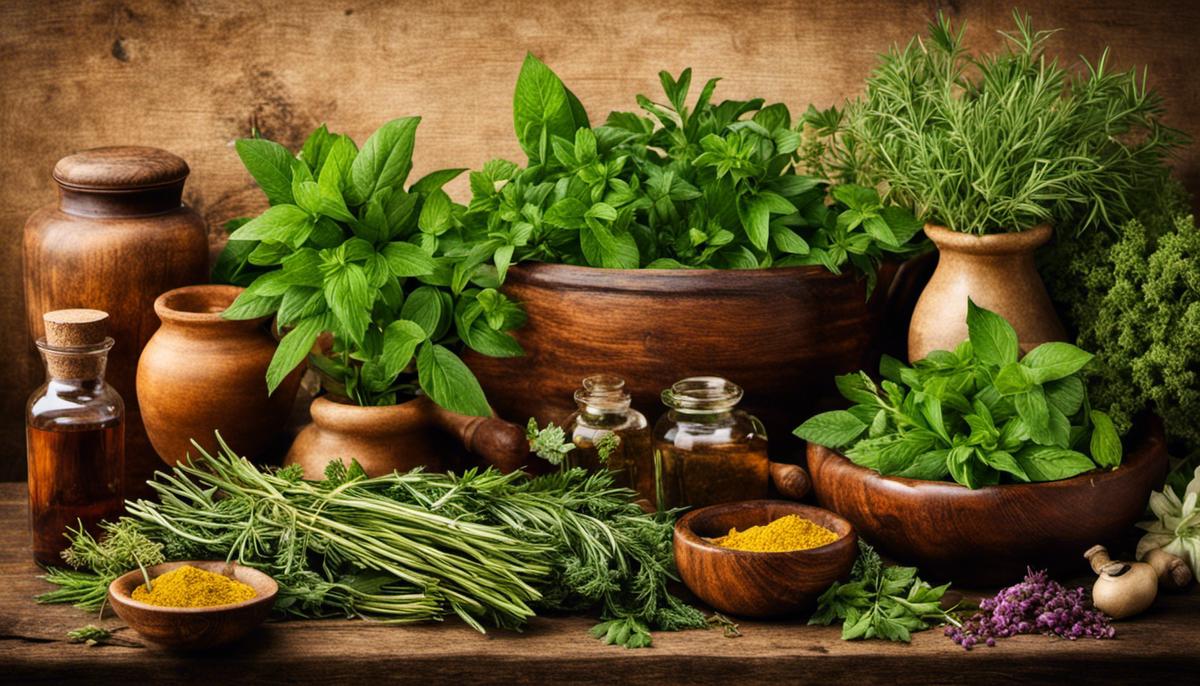
Herbs, Health benefits of herbs
Description: The vast expanse of medicinal herbs, grounded in centuries of traditional use and now progressively validated by scientific research, offer an intriguing exploration of natural health remedies. Medicinal herbs, utilized across varied cultures and generations, provide crucial insights into natural wellness. This understanding of historical use coupled with an exploration of the biochemical properties that define these herbs enables an intriguing discourse on their health benefits. Furthermore, mounting research studies and clinical trials offer a wealth of knowledge on the efficacy and safety of these herbs, bridging the gap between anecdotal evidence and empirical endorsement. The Extensive History and Usage of Medicinal Herbs in Healthcare For millennia, diverse cultures worldwide have cleaved to the profound healing properties of flora, with a substantial record of employing medicinal herbs within healthcare practices. This narrative seeks to explore this extensive history and ongoing usage of medicinal plants, a testament to the potency and relevance of traditional wisdom in contemporary healthcare. The origins of herbal medicine stretch back to prehistoric times, predating the emergence of written language. Archeological evidence implicating medicinal herbs was discovered in the 60,000-year-old grave of a Neanderthal man, pointing to an ingrained usage of nature's bounty since time immemorial. In ancient civilizations, including Egypt, China, and Greece, plants were described in prominent medical treatises, including the Ebers Papyrus and the works of Dioscorides and Hippocrates. The Medieval and Renaissance periods witnessed an expansion of herbal medicine with significant breakthroughs in botany and pharmacology. Renowned herbals like the De Materia Medica and the Doctrine of Signatures stipulated the efficacy of specific plants in treating human ailments. Meanwhile, indigenous populations across the globe have cultivated vast ethnobotanical knowledge within their societies, deploying medicinal herbs in a holistic approach to health. Transitioning into the modern era, the importance and usage of medicinal herbs have not dwindled, contrary to frequent conjecture. While synthetic drugs and technologies surge, thousands of phytochemicals – biologically active compounds in plants – are showing promising results. Consequently, the World Health Organization estimates that 80% of the world’s population depends, in part or wholly, on herbal medicine for healthcare. Notably, contemporary scientific research has validated many herbal remedies long known to traditional medical systems. For instance, the anti-malarial drug Artemisinin was sourced from Artemisia annua, a medicinal herb used for fever treatment in classical Chinese medicine. Similarly, the anti-cancer compound Taxol was derived from the Pacific Yew tree, confirming the longstanding medical wisdom of Native American tribes. These landmarks in phytochemistry underscore medicinal plants' role as a bountiful reservoir for new drug discovery. Despite this, the study and application of medicinal herbs entail traversing a myriad of complexities. It necessitates a comprehensive understanding of herb taxonomy, pharmacognostics, phytochemical profiles, extraction processes, dose prescriptions, pharmacodynamics, and interaction with synthetic medicines or other herbs. Also, safeguards against herb adulteration and over-exploitation require robust regulatory processes. Simultaneously, bridging the chasm between traditional herbal wisdom and modern scientific paradigms constitutes a notable challenge. Ethical issues arise in documenting and utilizing indigenous medical knowledge, necessitating respect for intellectual property rights and cultural sovereignty. In conclusion, carving a sustainable roadmap for integrating medicinal herbs into mainstream healthcare entails collaborative, multi-disciplinary efforts, both academically and practically. As we continue to grapple with global health crises, the imperative to harness the timeless wisdom of medicinal herbs grows ever more urgent. Therefore, delving into this ancient practice's extensive history and current usage, one cannot help but respect and appreciate the remarkable contribution of medicinal herbs to healthcare. Delving into the largely unchartered territories of medicinal herbs, one cannot overlook the intricate biochemical reactions they instigate inside the human body. Aptly dubbed the "natural healers," these herbs owe their therapeutic potentials to distinct biochemical properties. Categorization of medicinal herbs based on these properties not only enhances comprehension of their operations but also fuels ongoing discussions around optimizing their utilization for human health. A herb's biochemical characteristics primarily circumnavigate its potential curative attributes, and four crucial properties have been identified amongst the extensive variety of medicinal herbs: A profound understanding of these biochemical properties unravels the intricate ways in which these natural pharmacopeias interact with our bodies, guiding our perspective towards more holistic, personalized health paradigms. Further, it draws attention toward harmonizing practices of plant-based medicine with advanced biomedical research, bringing forth a convergence of tradition and technology for optimum health outcomes. Humanity stands at a distinctive junction in healthcare evolution, where our ailing health systems are desperately seeking sustainable and holistic solutions. It is the potent amalgamation of traditional wisdom and scientific research in the realm of medicinal herbs that could empower us to create more resilient, inclusive global health narratives that leverage the extraordinary power encapsulated in these simple, yet potent forms of flora. The antioxidant properties in many medicinal herbs cannot be understated. Antioxidants play a substantial role in fighting against oxidative stress – a byproduct of our body's metabolic processes that can lead to age-related degenerative diseases such as Alzheimer's disease and various forms of cancer. These antioxidants neutralize harmful free radicals present within the body, protecting cells from oxidative damage. Medicinal herbs also possess intriguing anti-inflammatory properties, a potential gold mine for treating chronic inflammatory diseases. Crafty compounds like Curcumin found in turmeric, are known for their potent anti-inflammatory effects. Intrigue surrounds their potential for serving as natural analgesics, offering a prospective alternative for synthetic drugs often associated with unwelcome side effects. Antibacterial properties of medicinal herbs is an active area of research, with eye-catching results. A trend-setting area is the investigation into plant-derived antibacterial compounds, aiming to combat the growing concern of antibiotic resistance. For instance, extracts from Echinacea purpurea have been found to have inhibitory effects on a host of pathogenic bacteria. A further layer to this complex tapestry of medicinal herbs is their adaptogenic properties–a term denoting their capacity to enhance the body's ability to resist stressors. Adaptogens, like the revered plant Ashwagandha, are believed to work by normalizing the body’s functions under stress and may be valuable for mitigating stress and fatigue. Despite the bountiful potential of medicinal herbs, it is paramount to maintain a balanced approach, recognizing the need for harmonious integration of traditional plant-based medicine with biomedical practices. Achieving optimal health outcomes necessitates a multidisciplinary approach that appreciates the wisdom of traditional herbalists while employing rigorous scientific methodologies. These scientifically proven health benefits of medicinal herbs paint a hopeful picture of sustainable, holistic health solutions, drawing from our verdant plant kingdom. Yet, it is important to qualify that more research is needed for us to fully tap into this potential, ensuring safe and effective use of these herbal bioactive compounds. In summary, the science-backed health benefits of medicinal herbs are manifold. From their antioxidant to their adaptogenic properties, medicinal herbs are a testament to the power of nature harnessed through the lens of science. As research evolves, there is expectation to discover further health benefits hidden within these green wonders, potentially paving the way for a medical revolution characterized by sustainability, accessibility, and harmonious co-existence with our natural world. Delving into the Crucial Insights on the Efficacy of Medicinal Herbs With an extensive history and time-tested wisdom in the rearview mirror, it becomes paramount to delve deep into the present scenarios concerning medicinal herbs. Poring over the recent scientific investigations and clinical trials becomes crucial in understanding the effectiveness of these natural powerhouses of health and wellness. Early scientific research backed by rigorous evidence-based clinical trials has started painting an intriguing picture of the therapeutic effectiveness of medicinal herbs. Evidence from in-vitro studies and animal models showcases a strong case for herbal medicine, particularly in the realm of antioxidant, anti-inflammatory, antibacterial, and adaptogenic capabilities. Through the lens of the biochemical labyrinth, the efficacy story begins with the exploration of "Bioactive Components". These are naturally occurring chemical compounds in medicinal herbs, which are attributed to their healing abilities. Unveiling such components and their interactions with the human biological system is an absolute cornerstone in botanical research. Essential bioactive components classified as phytochemicals, encompass alkaloids, flavonoids, terpenes, and saponins. These have shown promising potential in mitigating pathophysiological conditions owing to their antioxidant traits, granting potential protection against age-related degenerative diseases, and cancers triggered by oxidative stress. Continuing this healing journey, medicinal herbs have piqued interest due to the anti-inflammatory properties inherent within them. This is, indeed, a beacon of hope for chronic pain sufferers and for reducing inflammation. Modern research corroborates the utility of bioactive compounds as natural analgesics, which are emerging as powerful supplements for allopathic pain management protocols. On another imperative front, the climb of antibiotic-resistant bacteria has been a pressing concern. Encouragingly, the untapped potential of medicinal herbs with antibacterial properties has surfaced as a key player in this combat, as substantiated by early laboratory results. Remarkably, adaptogens, another category of bioactive compounds, have surfaced with the ability to support the body's stress response system. By enhancing the body's resilience towards biological and environmental stressors, they promise a valuable addition to the therapeutic toolkit. Nevertheless, it is crucial to note that this significant progress should not undermine the need for harmony between traditional herbal medicine and biomedical practices. Balance and integration are indispensable in proactive health management strategies. Translating these laboratory findings into safe, definitive health interventions requires continued rigorous research. This propels the scientific community towards the ultimate goal of diluting boundaries between traditional herbal wisdom and contemporary medical science. Unquestionably, the bioactive puzzle of medicinal herbs is complex and intricate, having multiple dimensions that transcend beyond antioxidant, anti-inflammatory, antibacterial, and adaptogenic properties. Each puzzle piece, a unique biochemical property, is integral to completing the health picture, providing holistic and sustainable solutions. Conclusively, the current scientific findings on medicinal herbs underscore their promising potential, but also signal the long path ahead soaked with challenges and discoveries. Thus, forging ahead with further research could truly manifest the era where the wisdom of traditional herbal medicine and the power of modern science create a harmonious symphony for optimal global health. Understanding medicinal herbs' multifaceted benefits, from their historic usage to their biochemical properties, and the health benefits they confer is not merely academic, but rather, it's a necessary stride towards embracing diverse and effective approaches to healthcare. The breadth of the subject articulates the global culture's collective wisdom and scientific validation, showcasing the harmony of tradition and modernity. By embracing, analyzing, and learning from an array of scientific studies and clinical trials, one can come to truly appreciate the potential of herbs in both preventive and curative medicine, envisaging a future where healthcare is a synergetic integration of conventional and herbal practices. Herbs are part of the leaves, and it is considered one of the most used plants in cooking, and it can be used while it is green or dried, and the plants are usually dried to keep them, and they have many examples, and trade in them is very profitable, and examples of herbs include the following: barks (cinnamon), berries (peppercorns), seeds (cumin), roots (turmeric), flowers (chamomile), buds (cloves) and stigmas of flowers (saffron. Herbs are of great importance in adding flavor and color to food and drink, whether the food is sweet or salty, and herbs are also considered food and drink that are beneficial to health. Herbs have many importance and benefits, as they contribute to the treatment of heart diseases, cancer and diabetes, and also deal with them, and also help reduce blood clotting and provide anti-inflammatory and anti-tumor properties, and several studies have concluded the following: Garlic, onions, mint, basil, oregano, sage, and many other herbs help protect against cancer. Herbs contain antioxidants, especially cloves, cinnamon, sage, oregano and thyme, and help reduce low-density lipoproteins. You can add most herbs to foods, and they can be added to your liking according to what you like, and they can be added to the following: stews and casseroles; They don't always have to be added to a dish - adding herbs as soon as a dish is served is another great way to enhance the flavour, aroma and appeal of your dish. For example, a spaghetti bolognese with some fresh basil leaves on top or a pumpkin or chicken dish with fresh sage leaves.Understanding the Background of Medicinal Herbs
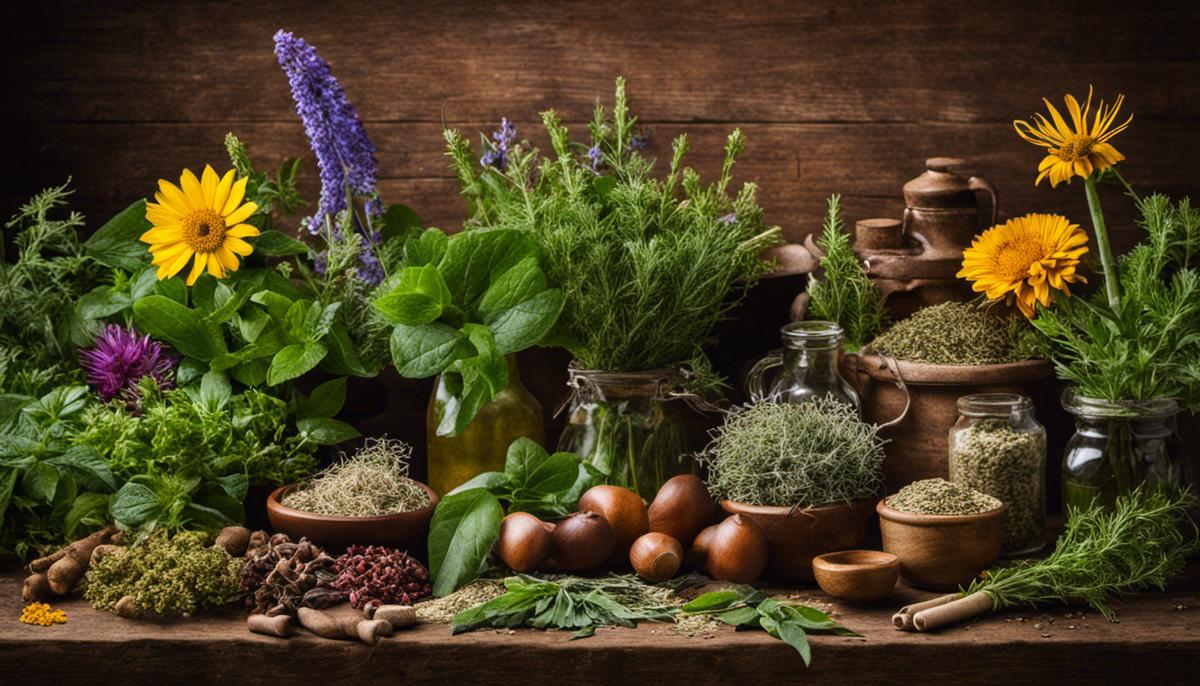
Classifying Medicinal Herbs and Their Biochemical Properties
The Intricate Webs of Biochemical Interactions Across Main Categories of Medicinal Herbs
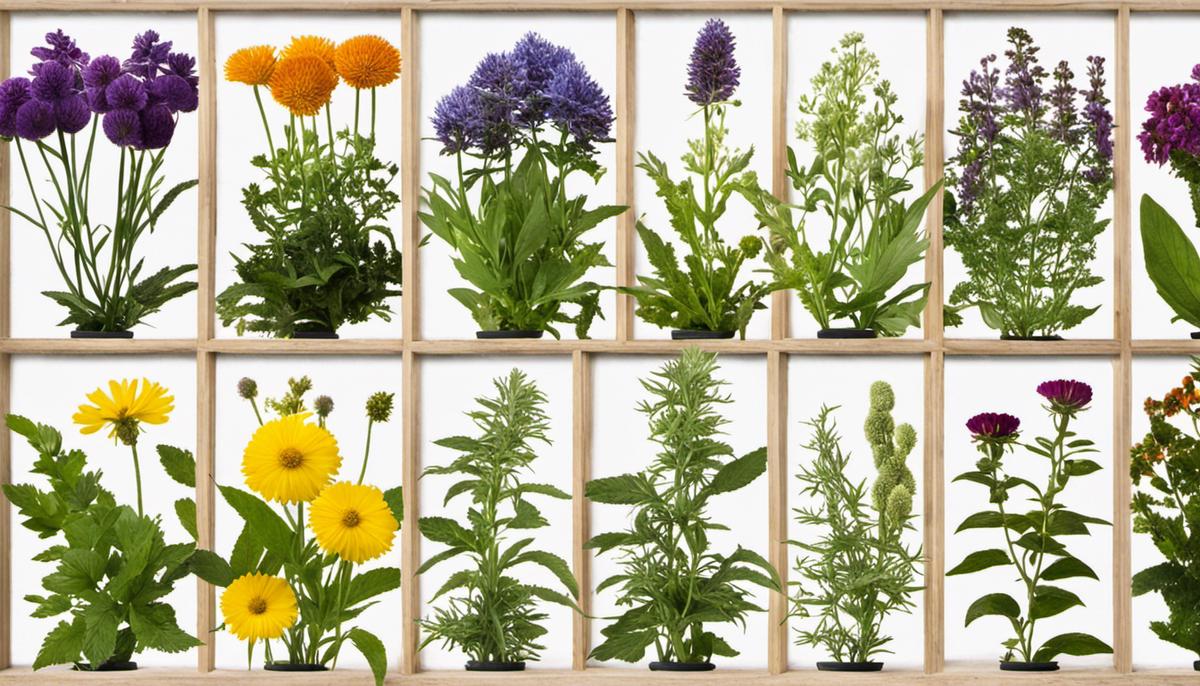
General Health Benefits of Medicinal Herbs
Delving into the bioactive components of medicinal herbs unveils a myriad of health benefits substantiated by the diligent endeavors of modern science. These plant-derived compounds, often referred to as phytochemicals, comprise of a diverse range of alkaloids, flavonoids, terpenes, and saponins, among many others.

Specific Case Studies and Clinical Trials on Medicinal Herbs
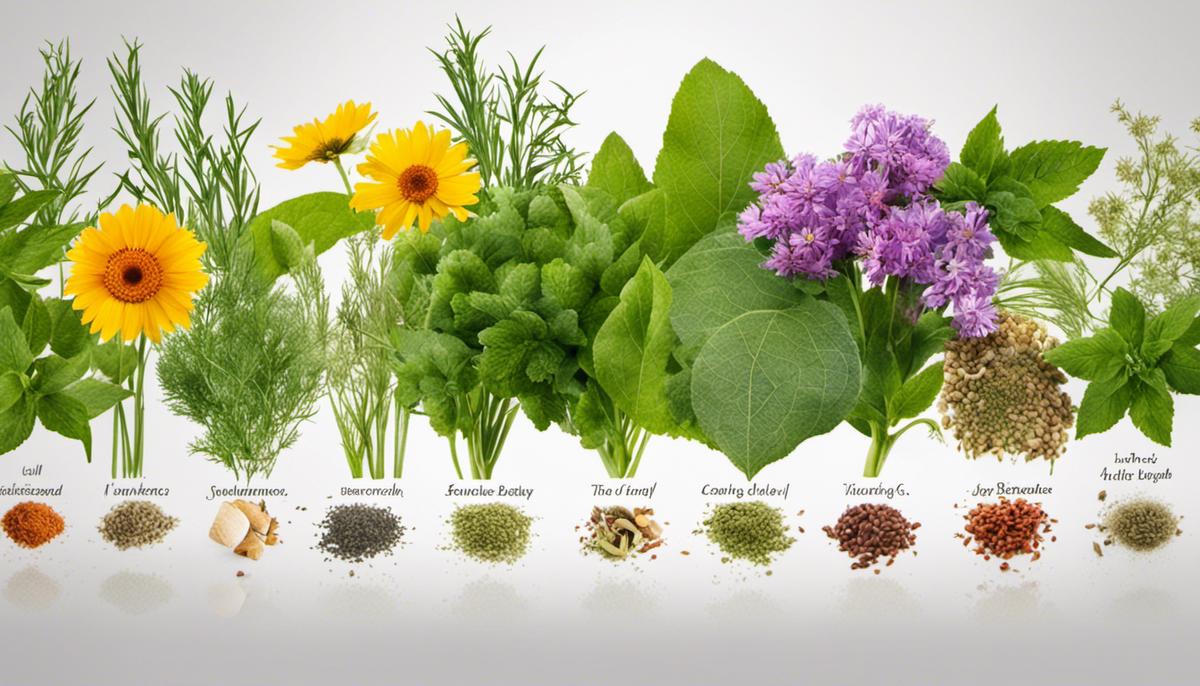
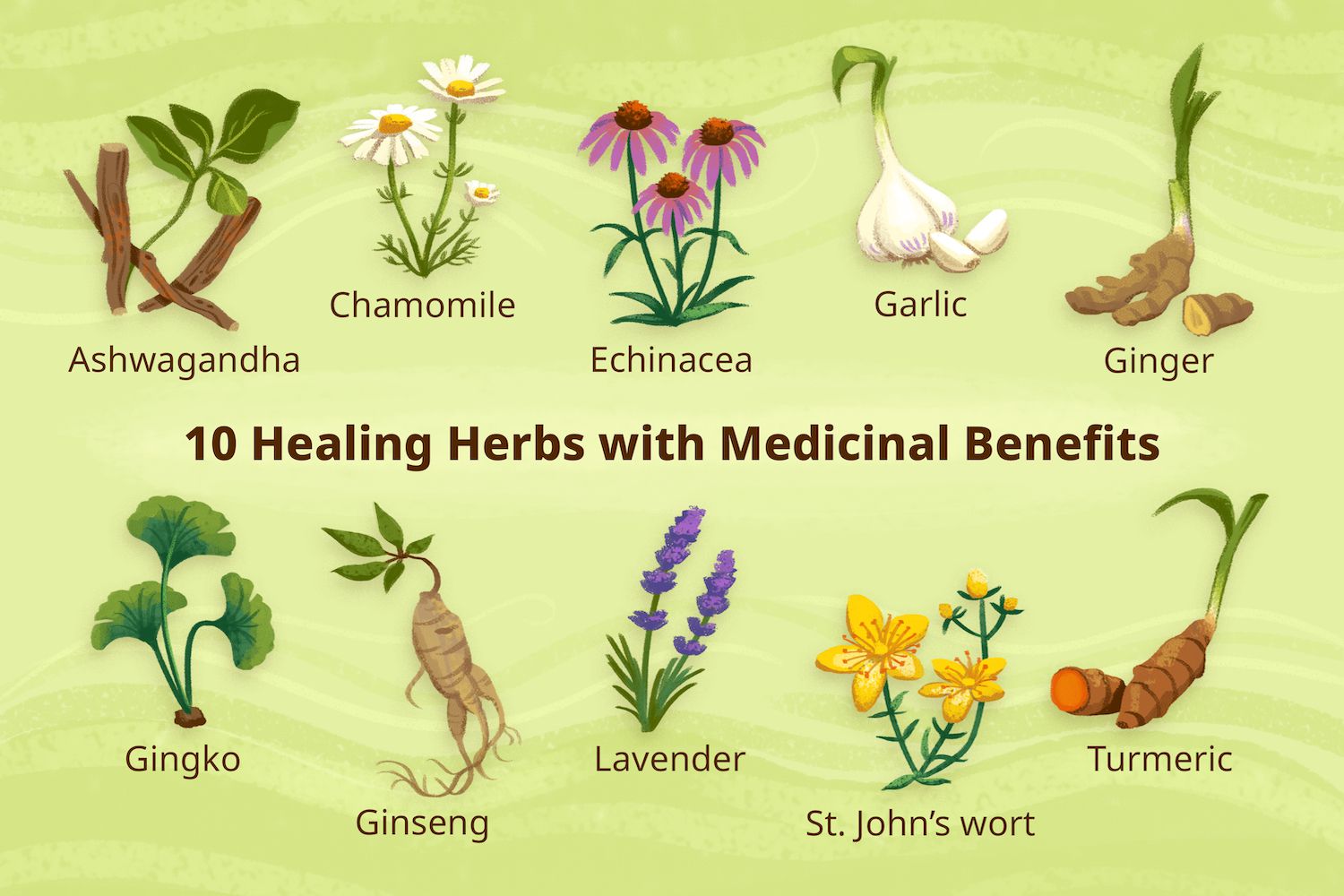
Health benefits of herbs
Herbal cooking